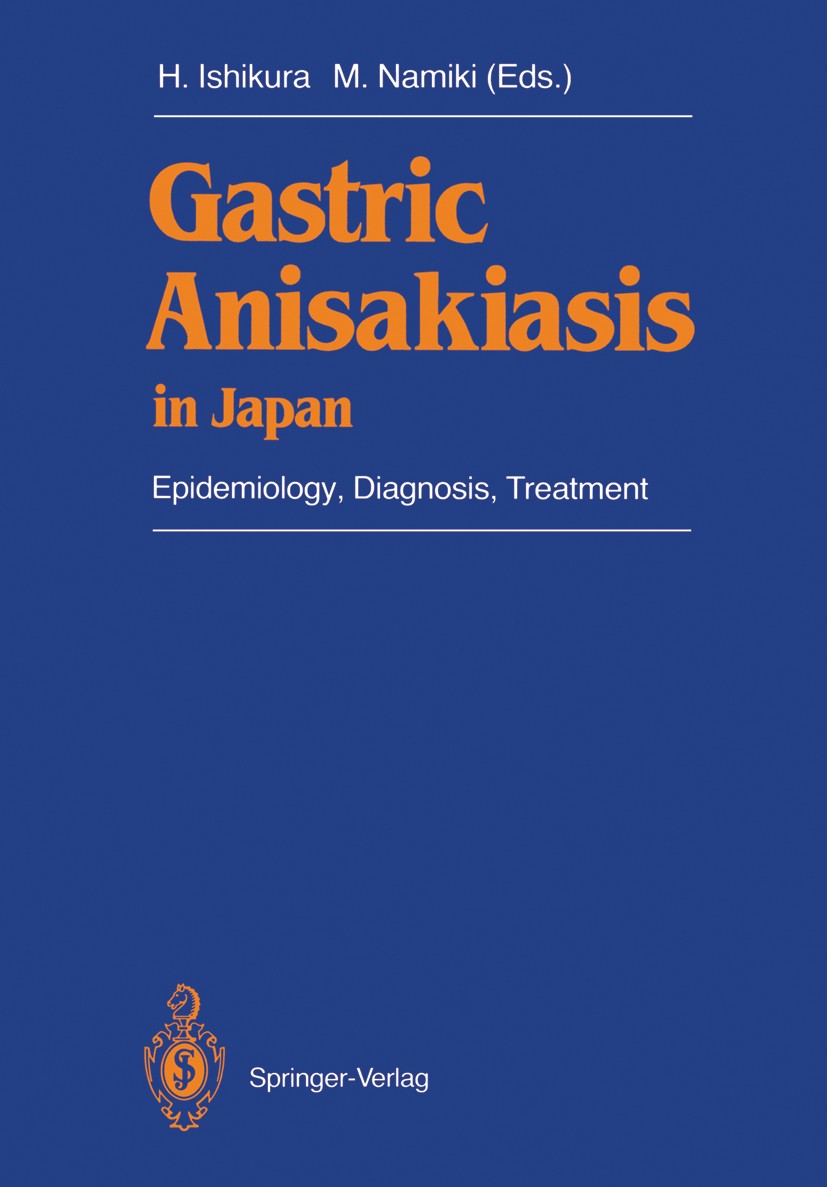| 书目名称 | Gastric Anisakiasis in Japan | | 副标题 | Epidemiology, Diagno | | 编辑 | Hajime Ishikura (Director),Masayoshi Namiki (Profe | | 视频video | http://file.papertrans.cn/381/380816/380816.mp4 | | 图书封面 |  | | 描述 | The larvae of Anisakis, whose adult form lives on sea mammals such as whales, seals, and dolphins, are parasitic upon many species of salt-water fish. When the final host animals eat paratenic hosts, the larvae grow to adulthood in the hosts‘ stomach. However, when hu mans eat these infested fish, the larvae die instead, causing a disease called anisakiasis. In 1960, in the Netherlands, van Thiel et al. found a worm in the intestinal wall of a patient who had eaten raw herring and had suffered symptoms of acute abdomen. The impact of this report was tremendous among Japanese parasitologists because of the Japanese habit of eating raw fish. In 1964, the Special Research Group from the Ministry of Education was established to investigate the disease, stimulating progress in the study of anisakiasis. Three types of worm, Anisakis simplex larva (previously known as Anisakis larva type I), Anisakis physeteris larva (Anisakis larva type II), and Pseudoterranova decipiens larva type A, are believed to cause anisakiasis. As many as 165 kinds of fish and squid in the seas near Japan are hosts to Anisakis simplex, and 9 species are hosts to Pseudoterranova decipiens larvae. Contra caecum ha | | 出版日期 | Book 1989 | | 关键词 | antibody; biopsy; diagnosis; endoscopy; epidemiology; immunology; hepatology | | 版次 | 1 | | doi | https://doi.org/10.1007/978-4-431-68290-5 | | isbn_softcover | 978-4-431-68292-9 | | isbn_ebook | 978-4-431-68290-5 | | copyright | Springer-Verlag Tokyo 1989 |
The information of publication is updating

|
|
 |Archiver|手机版|小黑屋|
派博传思国际
( 京公网安备110108008328)
GMT+8, 2025-12-14 18:02
|Archiver|手机版|小黑屋|
派博传思国际
( 京公网安备110108008328)
GMT+8, 2025-12-14 18:02


